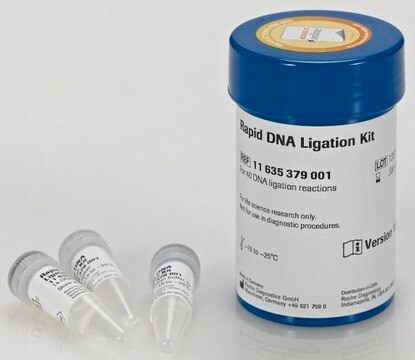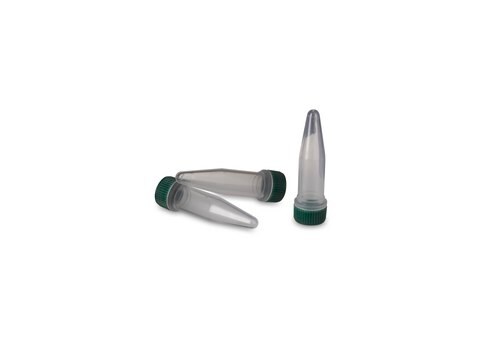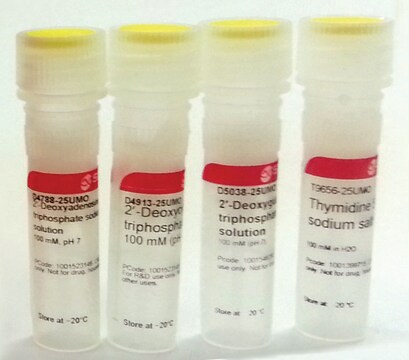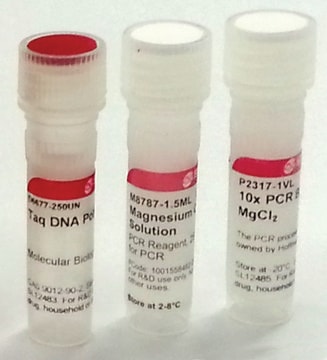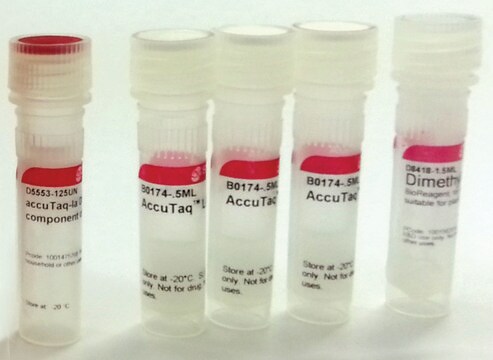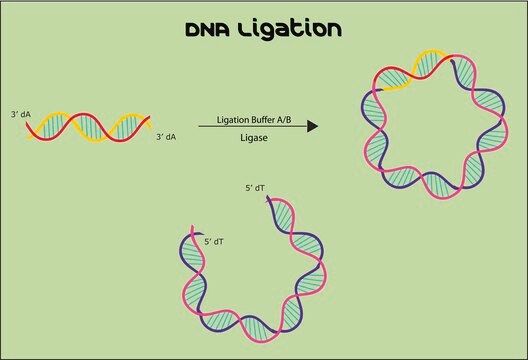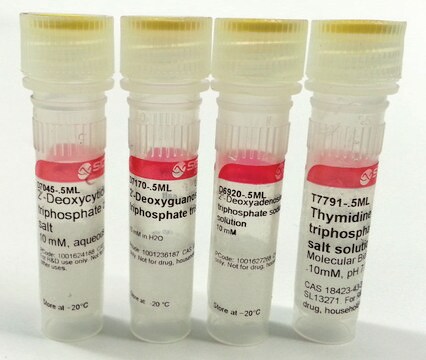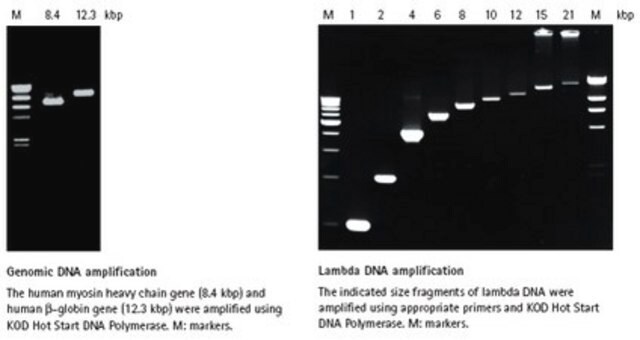D2886
DNA Ligase from T4-infected Escherichia coli
buffered aqueous glycerol solution
Sinónimos:
Polydeoxyribonucleotide Synthase, Polynucleotide Ligase, T4 DNA Ligase
About This Item
Productos recomendados
grado
Molecular Biology
for molecular biology
Formulario
buffered aqueous glycerol solution
actividad específica
4,000 U/mL
mol peso
68 kDa
Nº de acceso UniProt
temp. de almacenamiento
−20°C
Información sobre el gen
bacteriophage T4 ... 30(1258680)
¿Está buscando productos similares? Visita Guía de comparación de productos
Categorías relacionadas
Aplicación
- Ligation of blunt ended or cohesive DNA fragments
- Ligation of cloning vector and restriction insert fragments
- Seal nicks in double stranded DNA and RNA or DNA/RNA hybrids
- Couple RNA single strands by bridging oligonucleotide adapters
Acciones bioquímicas o fisiológicas
Componentes
Definición de unidad
Otras notas
Producto relacionado
Palabra de señalización
Danger
Frases de peligro
Consejos de prudencia
Clasificaciones de peligro
Resp. Sens. 1
Código de clase de almacenamiento
10 - Combustible liquids
Clase de riesgo para el agua (WGK)
WGK 1
Punto de inflamabilidad (°F)
Not applicable
Punto de inflamabilidad (°C)
Not applicable
Equipo de protección personal
Eyeshields, Gloves, multi-purpose combination respirator cartridge (US)
Elija entre una de las versiones más recientes:
¿Ya tiene este producto?
Encuentre la documentación para los productos que ha comprado recientemente en la Biblioteca de documentos.
Los clientes también vieron
Protocolos
T4 DNA Ligase catalyzes the formation of a phosphodiester bond between the terminal 5′ phosphate and a 3′ hydroxyl groups of duplex DNA or RNA. The enzyme efficiently joins blunt and cohesive ends and repairs single-stranded nicks in duplex DNA, RNA or DNA/RNA hybrids.
Nuestro equipo de científicos tiene experiencia en todas las áreas de investigación: Ciencias de la vida, Ciencia de los materiales, Síntesis química, Cromatografía, Analítica y muchas otras.
Póngase en contacto con el Servicio técnico
